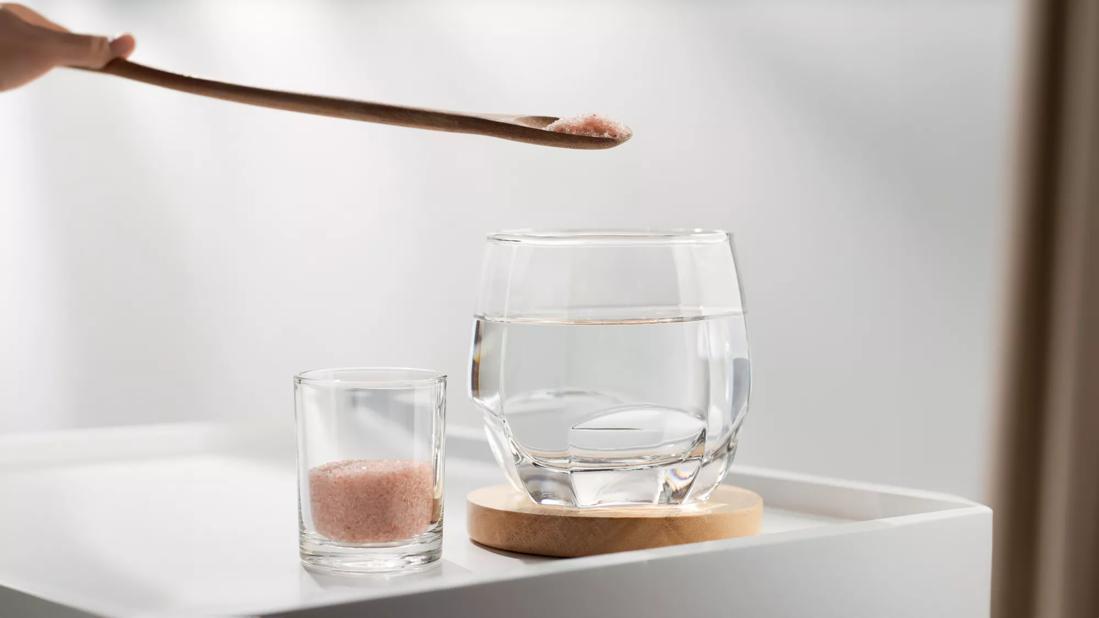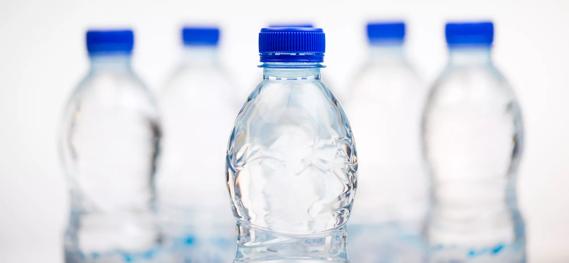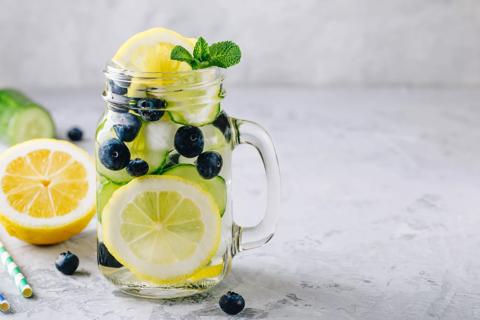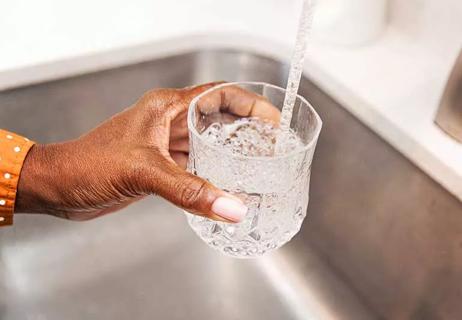Adding salt to your water isn’t going to have measurable benefits — but there may be plenty of downsides

If you’ve been scanning the headlines or scrolling social media, it’s easy to think that sole (pronounced “so-LAY”) water is a miracle concoction.
Advertisement
Cleveland Clinic is a non-profit academic medical center. Advertising on our site helps support our mission. We do not endorse non-Cleveland Clinic products or services. Policy
Stir up pink Himalayan salt with water. Let set. And you’re ready to down dozens of “essential minerals” that promise to transform your health for the better.
But as with so many quick fixes and fad diet advice, the supposed benefits of sole water aren’t based on real science. And the practice can be cause for concern.
We talked with registered dietitian Gillian Culbertson, RD, LD, to find out if there’s any truth to the health benefits claimed by sole water enthusiasts. (Spoiler alert: It’s not doing what you think it is.)
Sole water is a drink made from saturating pink Himalayan salt in filtered or distilled water.
A typical recommendation for making the drink goes something like this:
Some people will tell you to drink one glass of sole each morning, preferably as soon as you wake up. Others advise drinking sole water in place of regular water.
Fans of the drink will tell you that sole water will do all kinds of wonders for your health. But the claims don’t stand up to scrutiny.
Advertisement
The theory goes that pink Himalayan salt is full of vital nutrients your body needs. By some accounts, sole water is said to have more than 80 essential nutrients.
So, they argue, when you drink the salt water mix, you reap the benefits of all those nutrients. And bask in the glow of their benefits, like:
But it’s not so simple.
Sole water is essentially salt water. And adding salt isn’t a recipe for good health.
Let’s start by understanding what’s in salt.
Some people use the words “salt” and “sodium” interchangeably. But there’s a difference.
Sodium is by far the most abundant element found in salt. Typically, salt is about 40% sodium and 60% chloride. But salt can also include tiny amounts of other elements, too. Like potassium, calcium, iron, magnesium and more.
“The claims about the benefits of sole water are very loosely based on the fact that there are trace minerals in pink Himalayan salt. But we’re talking about very tiny amounts of minerals,” Culbertson clarifies.
Think of salt like a double cheeseburger with a few bits of shredded lettuce on it. Sure, lettuce contains some vitamins and minerals. But the potential benefit of those nutrients doesn’t come close to outweighing the saturated fat content of the burger.
When you’re ingesting salt, what you’re getting is sodium more than anything. And that’s where the argument for the benefits of sole water starts to fall apart.
“You’d have to consume incredibly high amounts of sole water to get any significant amount of minerals other than sodium,” Culbertson notes. “And at that point, the sodium content would be well over a healthy intake.”
For example, researchers in one study say that to get any meaningful nutrients from pink Himalayan salt, you’d need to consume about 6 teaspoons of the stuff a day. That’s six times the sodium intake recommended by the U.S. Food and Drug Administration (FDA).
Sole water adds more sodium to your diet. And chances are, you don’t need it.
There’s truth to the argument that your body needs sodium. That’s not up for debate.
Electrolytes like sodium, potassium and magnesium help fuel needed chemical reactions in your body — like the reactions that cause your muscles to contract — and they help keep you hydrated.
But your body only needs sodium in very small amounts. And you’d be hard-pressed to find many people who don’t get enough sodium already. In fact, researchers estimate that 89% of people in the United States consume more sodium than recommended.
Advertisement
“We recommend the general population should consume less than 2,300 milligrams (mg) of sodium a day, or 1,500 mg for anyone following a low-sodium diet,” Culbertson shares. “That can be hard enough to achieve without purposely adding salt water as part of your diet.”
We can’t know for sure the sodium intake in a glass of sole water. There haven’t been studies where researchers take precise scientific measurements. And because it’s a homemade solution, your recipe may vary.
But Culbertson’s rough estimate, based on the supersaturation of salt, is that 8 ounces of sole water likely nets more than 500 mg of sodium. And it could be much more.
That’s almost one-fifth the sodium recommendation for the average person. And one-fourth of the recommended intake for people on a low-sodium diet.
What’s the problem with having too much sodium? Plenty.
“There are a lot of reasons we don’t want to have too much salt in our diets,” Culbertson states. “Sodium is already rampant in our food supply.”
A high-sodium diet can increase your risk for a host of health problems, like:
But, you’re thinking, I don’t eat that much salt. How bad could a glass of Himalayan salt water really be?
Advertisement
Chances are, you’re already downing more salt than you realize. Because not all high-sodium foods necessarily taste salty. A low-sodium diet is more than a matter of removing the saltshaker from the table and cutting down on pretzels. (Though that’s a good start.)
The U.S. Centers for Disease Control and Prevention (CDC) shares that among the top 10 sources of sodium in our diet aren’t the foods you necessarily think of as “salty.” They include things like:
If you’re looking to improve your health, sole water isn’t the way to do it. The very real risk of high sodium far surpasses the nominal addition of trace minerals.
“We say it all the time, but the best way to care for your health is to lower your salt intake and get your vitamins and minerals through whole, unprocessed foods,” Culbertson recommends. “Adding salt to your water is counterproductive.”
Advertisement
Learn more about our editorial process.
Advertisement

Consumption needs vary based on activity, weather, metabolism and other factors

A glass of lemon water in the morning can help with digestion and boost vitamin C levels, and may even help get you into a better routine

Mold and bacteria in your reusable water bottle can cause health issues like infections, respiratory issues and allergic reactions

Sitting in the dry heat may help reduce stress, improve heart health and relieve pain

Drinking untreated water can have dangerous consequences, like bacterial infections

Although it adds to your hydration, this water may be pushing you over the limit of the daily recommended dosage of caffeine

If you’re trying to drink less soda or fewer sugary drinks, flavored water can be a delicious and healthy alternative

Your home’s tap water should be safe to drink, but you can install filters and run tests to be sure

Babies can get congested easily, but you can calm their cough by keeping them hydrated, using nasal drops and running a humidifier

Weight loss may cause loose, sagging skin and muscle loss to your rear

Several conditions, like vitiligo and fungal infection, can cause a loss of pigmentation, leading to white spots or patches on your skin